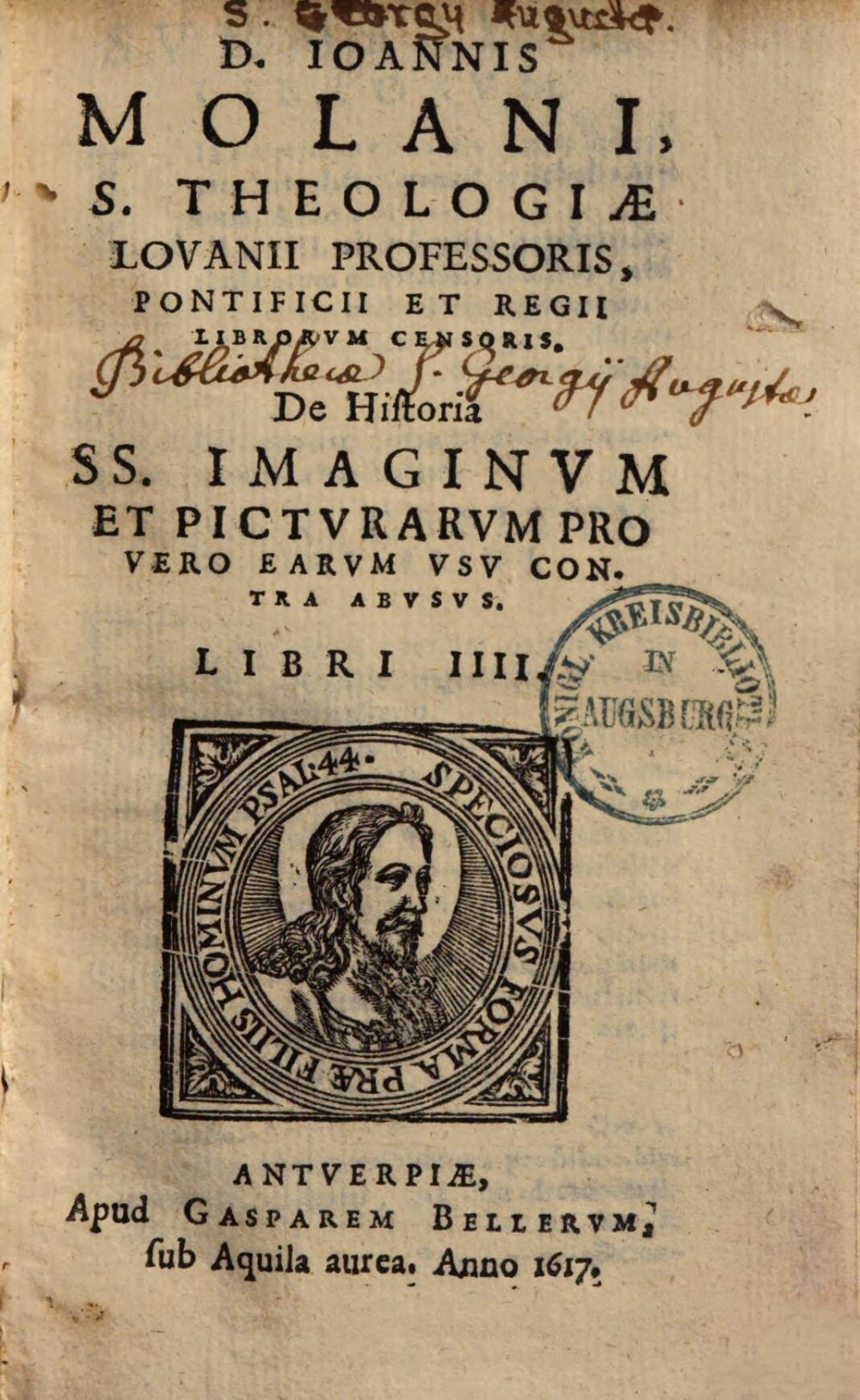
Augsburg, Staats- und Stadtbibliothek — Th H 1475. Digital Reproduction: München, Bayerische Staatsbibliothek, 2015.
In book 2 chapter 46, Molanus discusses the position of saints in paints and how this should be interpreted. The bottom line of Molanus’ argumentation in this chapter is that the position of saints in painting does not reflect their position in heaven and neither does it say anything about the relation between different saints. Therefore, one should not give too much weight to these matters and that it is not worth quarrelling about.
The second matter discussed in this chapter is Molanus’s plea that the position of saints in painting should not lead to discussion and debate. For his argument, he refers to the Golden Legend and the work of Thomas Kempis, which both suggest that people on earth should not discuss the hierarchy of saints in heaven.
“The Golden Legend offers us this argument: ‘We are in happy concord in heaven, do not quarrel about us on earth.’ In the same way, the representations of the saints must not be the occasion to obstinately give one the upper hand over the other. In this regard, Thomas à Kempis writes, amongst others, in his very erudite chapter, chapter 63 of book 3 in The Imitation of Jesus Christ: ‘Do not dispute any longer about the merits of the saints, nor seek to know whether this one is holier than that one, nor which is the greater in the kingdom of heaven. These inquiries often lead to disputes and useless contention, and foster pride and vainglory, from which jealousy and dissension arise, this one preferring this saint, that one preferring that one, and each wanting to be the highest. The examination of such questions, far from bringing any fruit, displeases the saints, because he is not a God of dissension, but of peace and this peace consists more in sincere humiliation than in elevation.'”
“Iuxta illud quod aurea Legenda adfert, bene concordes sumus in coelis, de nobis non disputetis. Sic etiam in picturis non est istorum occasione, unus alteri contentiose praeferendus. Scripsit hac de re Thomas de Kempis eruditissum Caput, lib 3., de imitatione Christi, Caput videlicet 63. In quo inter caetera sic ait: Noli etiam inquirere, vel disputare de meritis Sanctorum, quis alio sanctior, aut quis maior fuerit in regno coelorum. Talia generant saepe lites et contentiones inutiles, nutriunt quoque superbiam et vanam gloriam, unde oriuntur invidiae et dissensiones, dum iste illum sanctum et alius alium conatur superbe praeferre. Talia autem velle scire et investigare, nullum fructum afferunt, sed magis sanctis displicent, quia non est Deus dissensiones, sed pacis: quae pax magis in humulitate vera, quam in propria exaltatione consistit. “
Thomas à Kempis, De imitatione Christi, book 3, ch. 63. 1 Corinthians 14, 33.
Molanus 1996, 259-260.



